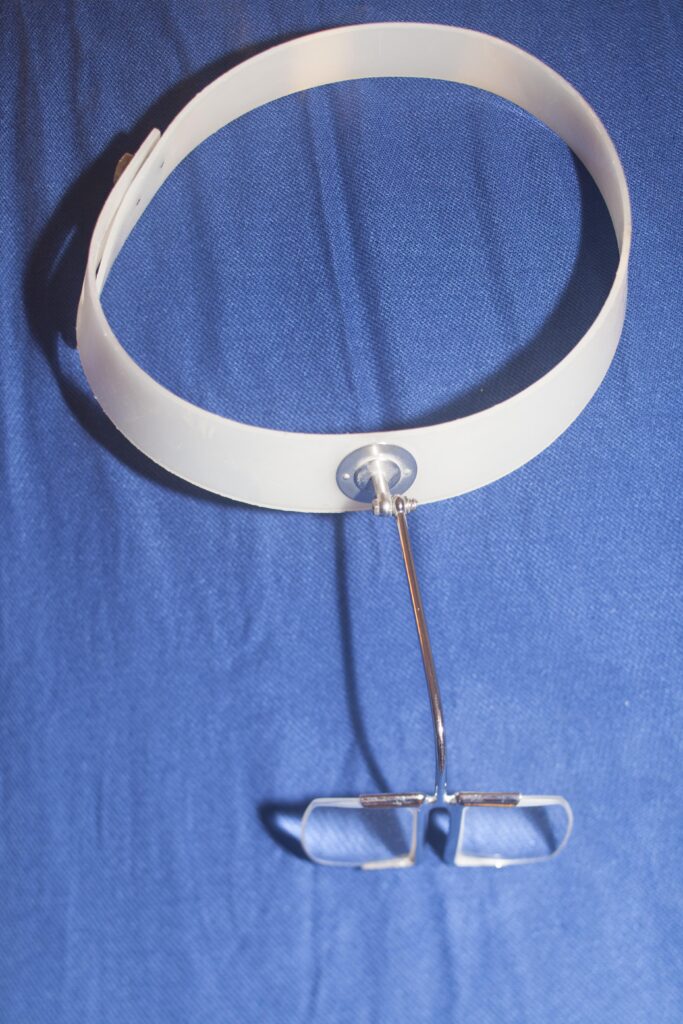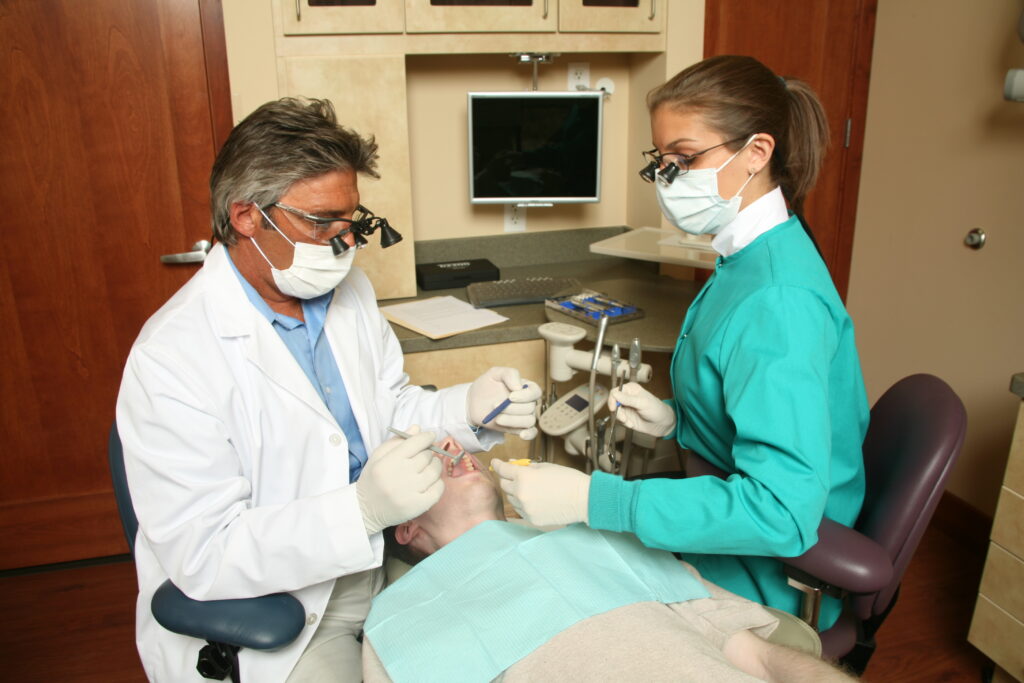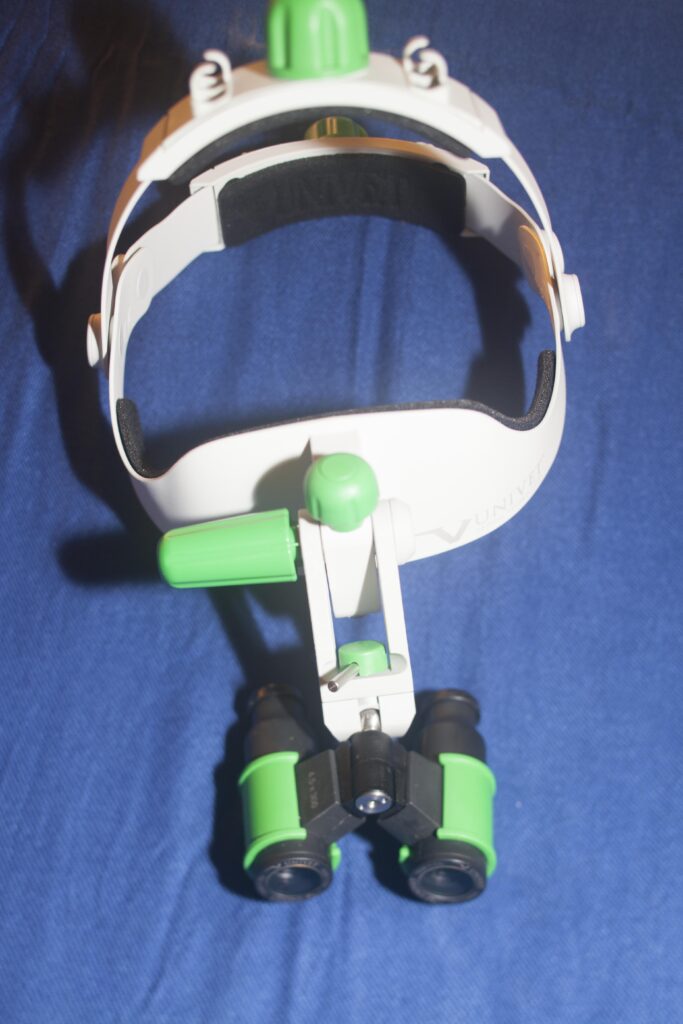The American Dental Education Association has a major role in how dentists get educated in this country. And, if you are interested in a job in this area, they can offer some guidance. But the required skills of dentistry go beyond simple education.
In this chapter I elaborate much further on the skill part, whereas the basic education part was discussed in Chapter VII.1.
Organization of this Chapter
You May Skip to Whatever Subject Interests You Now
Basics
Seeing is Believing
Know What to Look For
Preparing a Tooth Strategically
Seeing While Doing
Being able to See what you Need to See
Control of Movements
Bottom Line for Skills
………………………………………………………………………………………………………………………
Skills of Dentistry: Basics
In this Chapter we will be focusing on physical skills of dentistry – not business skills. The latter skills are discussed to some extent in the FAQ section under General Questions.
Here it is all about doing very small things very precisely, that you can hardly even see – but where an error that you cannot detect by the “naked” eye could cause the restoration to fail prematurely.
In this section I will only be addressing restorative dentistry – fillings and crowns. These procedures are among the most demanding in terms of details and well illustrate the points I am wanting to make.
Other dental disciplines certainly have details that need mastery, but the nature of how that mastery is achieved is demonstrated in this way.
The Skills of Dentistry: Seeing is Believing
First, we need to SEE really well. Now I’ve worn reading glasses most of my life, and see well with them, although they are getting very strong now and I need them to drive as well. The trials of getting older ….
But that is not good enough. Reading the little print on the bottle at the store is not good enough. We need some serious help – whether near sighted or far sighted.
We need LOUPES. Dental students these days are required to buy loupes, so they can comfortably see at the most detailed level. In 1989 I was the first student in my class to get loupes because my next door neighbor was an optometrist, and had some lying around – actually made in East Germany before the wall came down. I still have these today at home.
Loupes are not magnifying lenses. For generations many dentists have used magnifying lenses that can be pulled down over their eyes so they can focus closer and see things bigger. The kind of magnifying loupes that dentists commonly use these days are more than a simple, single lens. They have multiple lenses and sometimes even prisms – i.e. they are complex optical instruments.


These two people in the picture above are wearing loupes made by one of the companies, Orascoptic, that specializes in loupes for dentists. Over the years my students have bought thousands of pairs of their loupes.
Note that each eye has a separate set of lenses. Note also that the dentist has a LIGHT attached to his loupes!

One of the best things about loupes is that they will carry a light with them. Long gone are the days of the halogen bulbs and even the fiber optic lights, now the LED dental light is the way to go. What the dentist used to light up with the light over the chair, is now illuminated automatically with the light mounted on his loupes. Everywhere the dentist looks is automatically filled with light.
As long as the focusing distance of the loupes is not too far away and the magnification of the loupes is adequate, details under .1 mm in size can easily be resolved. THIS is what often determines the success or failure of the work.
What you see is mostly determined by what you are looking for!
IF you have the optical resolution TO see details, you still might not see them.
I learned this as I was having a student look again at a prepared tooth that had an obvious problem, easy to see. I told her that it was so obvious that when she saw it she would know, for sure, what I was referring to. I gave her five minutes to look again. Nothing. I gave her three more minutes. Nothing. Then I gave her a list of ten things to check, and in less than a minute she had the answer. She could NOT see the problem until she looked for THAT problem.
So much of life is like that ….
The Skills of Dentistry: Knowing What to Look For
OK – for the grammarians, “Knowing for what to look” ….
From the example above, it is clear that the dentist needs to have a profound knowledge of the details of the design of the preparation, so that they will KNOW what kind of criteria make a difference in the longevity of the work. The patient pays for our best work, and that means the work that lasts the longest.
If one doesn’t know intimately the criteria that determine the success or failure of a restoration, one CANNOT do good dentistry.
The dentist needs to KNOW what to look for, and needs to be able to see if they have met the requirements.
For the amalgam class II preparation, just the preparation, not including criteria for the filling itself, I give my students a list of 34 different specific things they need to check to see if the preparation works! Invariably, more failures are due to their not looking well enough to see if they made some error that can otherwise be corrected.
Preparing a Tooth Strategically
Every tooth that is prepared for a particular type of restoration – be it an amalgam filling, a gold onlay or a porcelain crown – needs to be cut in steps that are ordered rationally. There are always certain things that should be done first, and then second, etc. There are portions of the preparation that if done well, make the next steps easier – and vice versa.
I spend much of my days working with students trying to learn the truth of the last statement. They do a portion of the preparation poorly and expect the rest to go well – it will not! So I modify the first part of the preparation that they did and let them find out how easy the rest is when started well.
But it is a challenge for most people to learn to recognize how well they have done a particular STEP, WHILE they are doing it, and make sure that it meets every requirement BEFORE proceeding with the next step. Those that don’t get this will never do adequate work. The quality of every step determines the quality of the next.
So much of life is like that ….
The Skills of Dentistry: Seeing While Doing
When a particular step in any preparation is being done, the dentist must see what they NEED to see.
This is another point I am making with my students all of the time. For every step of every preparation, no matter whether it is for a crown or a filling, you MUST know what you MUST see.
To illustrate. When cutting the part of the Class II amalgam preparation that extends across the biting surface, removing the grooves and pits which are typically decayed, what does one need to see? The depth of cutting into the tooth must be seen, while cutting. The position of the isthmus that is cut to remove the groove must be seen, so that it is known that the groove is actually being removed. And, the angulation of the bur which is used to cut the tooth must be controlled, not leaning too much toward the facial or lingual surfaces.
To illustrate again. When the dentist is cutting down the side of the tooth for a class II preparation, the bur must be placed really close to the adjacent tooth. What does the dentist need to see while doing this? They need to see how close to the adjacent tooth they are! Does this seem obvious to you? It generally is to dentists as well, but you’d be amazed that as students it doesn’t seem so clear, with all of the information overload that they have, and they may well cut down the side and NOT see how close they are to the adjacent tooth. Of course, that means they will HIT the adjacent tooth.
One of the most important skills of the dentist is to know that they need to see, while they are doing the work. When working near an adjacent tooth it is necessary to see how close they are to that tooth, AND to see how far they are cutting into their tooth, AND to know that the bur they are cutting with is not leaning at all toward the adjacent tooth OR toward the facial or lingual. IF they cannot see these things, there will be trouble.
I am convinced that the great majority of people do not, naturally, think through what they need to be aware of when doing each part of a preparation. Those who do, are naturally more successful. Those that do not, have to work all that much harder to learn to have this awareness automatically.
So much of life is like this ….
Being Able to see What you Need to See
OK – so you know what it is that you need to see when you are doing a particular step in a dental preparation, but HOW do you see that? Knowing is critical, but you still have to SEE what you need to see.
The answer is always the same: you have to be looking in the right direction!
I can’t help repeating here the metaphor that I often use with my students. The Hollywood industry of the “horror film” is a big industry, worth billions of dollars. And, the success of this industry is based wholly on one thing – people looking the wrong way! Picture the scene that is in EVERY horror film – there is a pretty girl walking into a dark room through a door and she only looks to the right, when everyone knows the monster is to the left! Of course, her death is appropriately hideous for that genre.
If you are looking in the right direction, you can see what you want. Of course, you have to know what you must see, and you have to find the position that allows you to see it! This has to do with where the dentist sits relative to the patient’s tooth, and which direction he can see. If the dentist wants to see how close the bur is to the adjacent tooth, he/she must look parallel to the contact area on the adjacent tooth. Simple. Any other direction of view will not show them the distance between the bur and the next tooth.
Again, this comes with rational thought and practice for each type of preparation and for each quadrant of the mouth. And, of course, real life being what it is, sometimes particular patients have limitations that make it more difficult for the dentist to get into the position and look in the direction needed. In that case, we sometimes resort to cutting a little and checking every little bit until we get the step done. But, usually, positioning oneself in the right place and looking in the appropriate direction for every step of the preparation is easy and allows a rapid and efficient preparation to be done, safely.
The Skills of Dentistry: Control of Movements
Of course, seeing what you need to see is critical. Knowing what it is that your are needing to accomplish is critical. Doing it is another thing.
When cutting into a tooth with a bur that is turning 200,000 rpm, one needs to keep everything in the right place. SEEING where it is is important, but KEEPING it where you want it is part of the equation too.
The handpiece is normally air-driven and light weight and fits the hand like one would hold a pencil. Nobody writes on a piece of paper without resting their hand on the paper or table, and it is no different here. When cutting the tooth while holding the handpiece, one must have a solid FINGER REST. This is where some fingers, maybe one that helps to hold the handpiece, but certainly the ones that are not required for this, are firmly anchored to other teeth or the bony ridge that supports the teeth – something solid!
Then the movements that need to be made ARE made by simply moving the thumb, index and second finger in coordination. Often the distance over which this coordinated movement is very small, a mm or two. Sometimes it is larger, and a little more control of the coordination is necessary to keep the bur, for example, at precisely the same angle over a range of 15 mm.
With the vision and the strategy and the knowledge of what must be seen, and the position and viewing direction that allows that to BE seen, and a good finger rest, we can achieve the ultimate in control for any dental preparation.
Skills of Dentistry: Bottom Line
Learning the skills of dentistry to such a high level of precision takes a LOT or practice, but intelligent practice. It isn’t just cutting teeth over and over, it’s doing it with awareness. Every movement, no matter how small, has a purpose and the muscles that cause this movement and the nervous system that controls the muscles, and the brain that controls the motor nervous system, all must work in perfect harmony.
Some people come across this confluence of abilities rather naturally, and some have to work at it more. Many never get to the point where they are doing their dental preparations PERFECTLY.
But, here’s the good news: they don’t have to be perfect!
They do have to meet basic requirements so that they will not fail prematurely – and this doesn’t demand perfection. All of my student strive for perfection, and few even get close. But they don’t need to.
A good dentist is one whose work lasts the expected time in the patient’s mouth. This only requires doing an adequate job, not a great one. If the dentist gets a “C” average, he’s doing fine – the patient will be well served. But that DOES require that the details of the preparation are under good control – there are no small errors that would shorten the lifetime. The dentist may have cut more tooth structure than necessary and left some areas less smooth than desired, but that may well not shorten the lifetime. The patient still gets what they pay for, success.
Any dentist that cares about how long their work will last in the patient’s mouth CAN do a preparation that will maximize the lifetime.